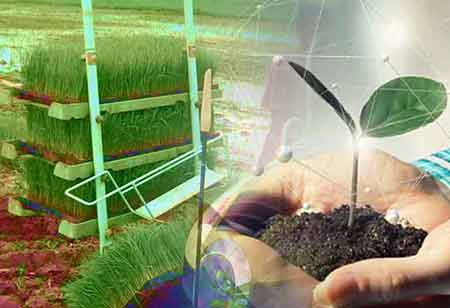Thank you for Subscribing to Agri Business Review Weekly Brief
Smart Agriculture Monitoring Solutions
Agriculture is heavily dependent on machinery. Even scheduled maintenance operations

By
Agri Business Review | Wednesday, June 08, 2022
Stay ahead of the industry with exclusive feature stories on the top companies, expert insights and the latest news delivered straight to your inbox. Subscribe today.
Take a closer look at the range of existing agriculture monitoring solutions, explore the advantages of their use in different agricultural subsectors, and outline an approximate plan for their adoption.
FREMONT, CA: The challenges farmers face today include:
Regular equipment maintenance
Agriculture is heavily dependent on machinery. Even scheduled maintenance operations consume time and impact the budget; nevertheless, they fail to eliminate the unpredictability factor. Once a piece of equipment unintentionally goes out of order, it generally leads to unexpected downtimes.
Correct water estimates
Growing plants require water, but the amounts of it differ based on soil humidity levels. Therefore, farmers must go to the field to measure these levels and take regular manual tests. Alternatively, they could use intelligent sensing technology, which is far more accurate, convenient, and time efficient.
Eliminating water waste and overhead expenses
Failing to assemble accurate soil humidity information may lead to the underwatering or overwatering of the plants. Poorly watered plants are dry and frail. Still, overwatering creates water waste and includes unpredicted water expenses.
Estimating correct planting times
Depending on various environmental factors, every plant has its optimal planting time. Still, it is often difficult to correctly estimate this time without accurate data.
Measuring soil temperature and moisture levels
Soil temperature and moisture levels are important metrics farmers need to collect to estimate the state of crops and take appropriate action. Unfortunately, measuring them correctly is usually impossible without IoT agriculture monitoring systems.
Pest control
Successful pest control comprising detecting pests, their location, activity and behavior patterns is another challenge for farmers. But, distinctly, this challenge is also quite hard to meet without IoT-based pest control systems.
Smart agriculture monitoring solutions
Below are some instances of smart agriculture monitoring solutions and how they work.
Soil condition monitoring
Soil condition is important in helping farmers decide on the optimal planting and crop gathering time. With IoT sensors conducting soil condition monitoring, farmers get immediately alerted of soil moisture and salinity. Other metrics include soil and air temperature: estimating them correctly enables farmers to plan watering times and know when to expect pests.
Soil condition monitoring requires hardware and software systems to operate in real-time and alert users of significant changes.
Weather Monitoring
Weather monitoring in agriculture is one of IoT's most frequent application fields. In crop farming, yields heavily depend on the environment, which is essentially volatile. Weather monitoring solutions located promptly in the field (like those used by weather stations) alert farmers on varying weather conditions – temperature, precipitation, humidity, solar radiation, and wind speed.
Greenhouse automation systems
A fragile and sensitive greenhouse ecosystem requires continuous maintenance and control. Smart agriculture solutions for greenhouse automation illustrate the application of remote sensing in agriculture.
They help retain optimal microclimate conditions and manage lighting, humidity, CO2 and temperature levels. In addition, instant alerts and increased management capabilities optimize the efficiency of greenhouse farming.
Crop monitoring systems
As crops mature and ripen, so many things can go wrong: diseases, infestations with pests, or adverse environmental conditions can cause irrevocable harm before farmers even notice. Smart sensing technology is applied in crop monitoring, which collects metrics about the state of the crops (temperature, humidity, health indicators). It enables farmers to take timely measures should anything go wrong.
Digital pest management
Pest infestations are some of the troubles crop farmers face regularly. Knowing when pests arrive can be hard, but pinpointing their activity and location is normally impossible without frequent field trips. Smart agriculture monitoring systems tackle these problems; they help allocate the exact amount of chemicals needed to eliminate pests in each case.
IoT pest identification systems like Strider count insects and decide their locations in real-time through an insect camera & sensors for crop pest detection located directly in the field.
Livestock monitoring systems
Besides crop and weather monitoring, agriculture monitoring solutions are also gaining broader applications in livestock farming. Combining sophisticated IoT hardware like wearables based on smart-sensing technology with state-of-the-art IoT software, ag-tech solutions help guard and protect livestock.
End-to-end farm management systems
From greenhouses to grazing fields, the complete farm area can accommodate smart agriculture sensors as important data collecting points for a strong, all-encompassing farm management system. Surely, such systems should leverage modern data analytics software and integrate seamlessly with accounting and procurement databases to deliver insights and completely unveil their analytical capacity.





